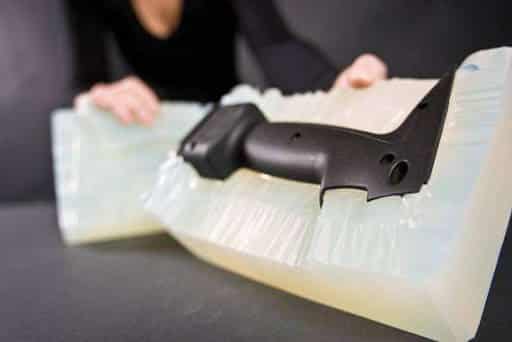The cast urethane process involves the use of high-quality equipment that produces thousands of pounds of product per day. With this method, parts can be made quickly while still being precise and of high quality. Whatever a customer needs, the product can be designed, drafted, and finally produced. Solutions for marine, pipeline, and oil and gas industries can be created for a seamless process.

Materials
The cast urethane process can vary, but the most common method involves a thermosetting resin. This resin is a prepolymer which is cured by heat or radiation, transforming it into a highly-resilient plastic or rubber. The main type of thermosetting resin is polyurethane, which is an umbrella term for another subset of materials including:
- Insulating foams
- Mattresses
- Adhesives
- Car parts
- Print rollers
- Synthetic fibers
This resin is popular for many applications because it has properties which enable it to be reprocessed and recycled.
The substance itself is only one of the many things that are necessary for the cast urethane process. The equipment that is needed includes:

Prepolymer and curative materials
- Gravity feed
- Transfer pumps
- Vacuums to de-gas or heat material
- Filters to avoid debris
- Mix heads
In addition, there are plenty of accessories that can be used for various and specific needs.

Methods
The cast urethane process creates a finished product by using a cast or mold master pattern and injecting the material inside of the mold. The basics of this method simply involves bringing together two liquid materials which chemically react and form into a solid shape. This method allows the substance to take on any shape or form that can be imagined. While the basic steps appear rather simple, there is a lot of hidden science and techniques behind the actual procedures.
The master pattern may be open or closed molds, and with or without reinforcements. A few reasons this method is popular is to produce short-term parts, prototypes, molds, or tools. Since the resin has such a range of properties and strengths, it is a versatile material for a variety of applications. A wide range of equipment is used to control the substance and handle it appropriately. It is necessary to control the temperature and rate of flow to ensure that the end product is without flaw.
There are two ways in which the cast urethane process can be conducted: with gravity-fill molds or with pressure-fill molds. Gravity molds are a rather self-explanatory method. It is the perfect method for creating prototype products and products with short to medium production times.
On the other hand, pressure fill molds inject the substance into a mold with the use of equipment such as an injection ram or a screw-type plunger. The substance is heated in a barrel or bin and is moved with the plunger. As the material melts, the plunger pushes it forward through a nozzle and into the mold. This process can get more complex, and a lot of consideration must be given to the material, the master pattern, and the equipment used.